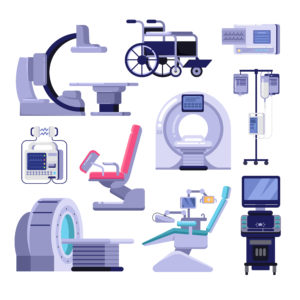Tracking and Tracing Medical Devices: 4 Ways to Simplify Your UDI and GDSN Data Management
By: John Lorenc, Senior Manager Regulatory Solutions — Life Sciences Reed Tech

Tracking medical devices throughout the healthcare supply chain and delivery system has proven surprisingly difficult around the world. Some industry observers have even quipped that, in the U.S., we can trace a recalled bag of potato chips better than we can a faulty pacemaker.
The principal reason for this challenge over the years has been rooted in fundamental differences between the way that consumer goods and medical devices are regulated. The reality is that medical device regulations are so strict they have created an onerous compliance landscape in which manufacturers and distributors have made little progress with developing their own standardized product identification system.
Against this backdrop, the U.S. Food and Drug Administration and its comparable regulatory agencies in other countries have tried to break through the blockage by rolling out a common worldwide system for product identification applied to all medical devices. The U.S. FDA has determined that the new “Unique Device Identification” (UDI) standard will become the common system for medical device product identification in the U.S. and that decision has led other major regulatory bodies around the world to come on board as well.
This means that medical device companies now must be pro-active in the way they identify their products and exchange data across two global information standards — UDI and the Global Data Synchronization Network (GSDN). It’s important to understand that, while these two standards support the same industry, they serve different practical functions:
• UDI is designed to mark and identify medical devices within the healthcare supply chain for regulatory purposes.
• GSDN is designed to enable trading partners throughout the healthcare industry to exchange product data for commercial purposes.
While UDI holds great promise for improving our ability to track and trace medical devices and GDSN offers commercial transparency, both systems also introduce an additional data management challenge for manufacturers.
Here are four ways that medical device manufacturers and other life sciences companies in the supply chain can simplify their UDI and GSDN data management:
1. Establish a centralized data management plan
Perhaps the most important step to simplify data management is to place all product data in a single place from the beginning. This allows you to increase internal efficiency and decrease the risk of errors down the line as you transmit data to either regulatory bodies or commercial trading partners. The best-centralized databases are cloud-based systems that are accessible to your organization’s global stakeholders and allow you to manage all phases of the process from data collection and capture to validation and record preparation, and finally to submission and ongoing maintenance.
2. Plan costs before beginning
A common pain-point for companies and organizations looking to change their data management systems in accordance with these regulations is the cost, particularly in defining how expensive it will be before stepping into it. To properly identify the costs unique to your institution, create a plan for implementing and upkeeping the program.
Will you create the changes yourself, partner with an outside organization, or fully outsource? What kind of added equipment will you need for both manufacturing and data management? How many people will set up and maintain the system? How much training will be required once the system is ready to go? How often will the process need to be updated?
Be sure to walk through every step of the process including set-up and maintenance to get a clearer idea of your costs.
3. Prioritize use cases based on market opportunity
It’s important that you only provide the precise data you need to provide to the intended recipient. For example, you want to guard against sharing more data with regulators than is required, and by the same token you don’t want to disclose proprietary compliance data to your commercial partners. Work with an expert data management provider who can walk through best practices for collecting, storing, managing and sharing device product data in a secure manner that minimizes the risk of data leakage.
4. Prioritize use cases based on market opportunity
Compliance with UDI and GSDN is not a small undertaking, it is a serious data management responsibility that will require the allocation of significant resources — but some countries and trading partners will require more from you than others. A savvy medical device company will understand the requirements of regulators in different countries, as well as their commercial trading partners, then prioritize their data governance efforts based on the business importance of those markets. You can’t do everything at once, so it only makes good sense to simplify by supporting the company where there is the most market opportunity.
The challenge of managing product identification data for both UDI and GSDN is not easy, but there are a few things that medical device companies can do to ease the burden. If the UDI standard can be embraced worldwide, we will take a giant step toward better tracking medical devices throughout the healthcare supply chain — and maybe even being able to trace a faulty pacemaker as well as we can locate a recalled bag of potato chips.
For medical device manufacturers, Reed Tech provides UDI specific solutions, services and expertise, reducing the internal burden in navigating the required business rules for validating, managing and submitting to regulatory agencies.
For questions about UDI solutions and services, get in touch with Reed Tech by email at [email protected].

